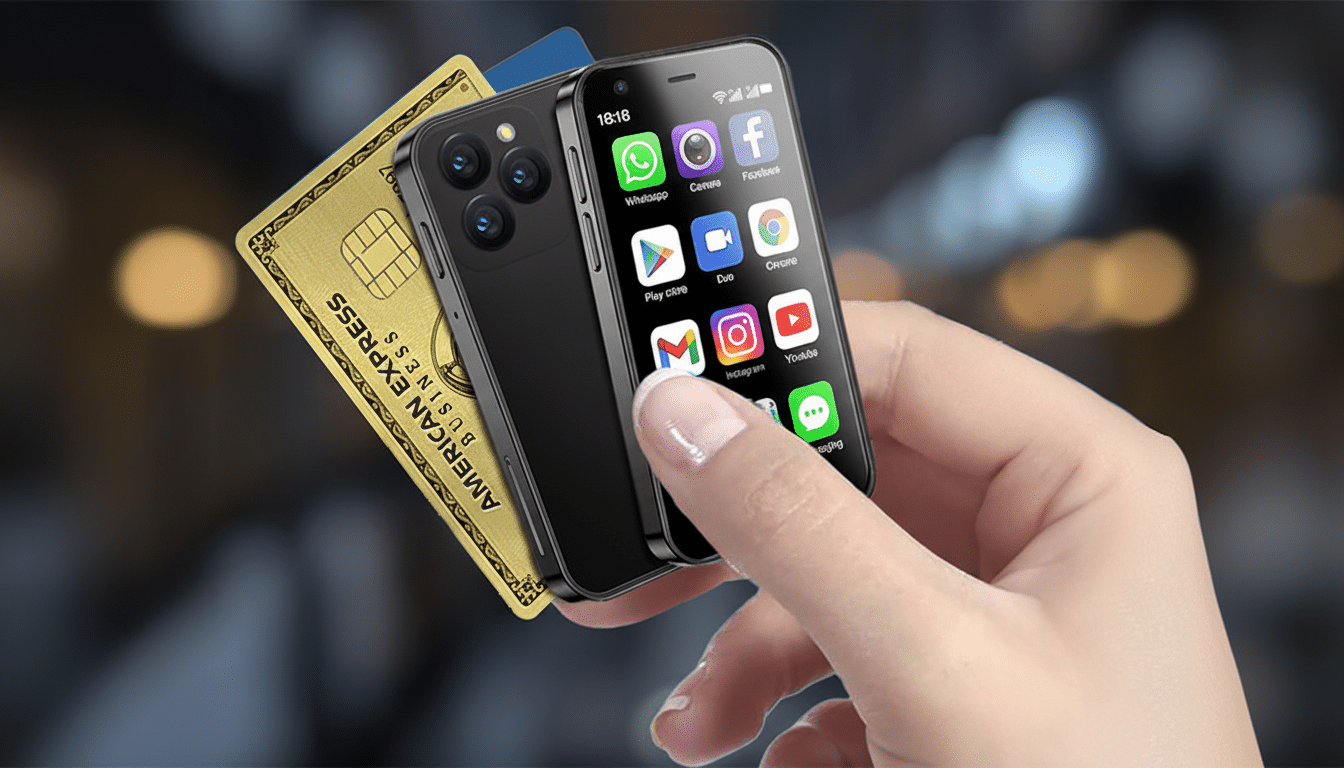A diminutive Android phone priced at $90 is the subject of a growing wave of interest: It is no-frills enough not to be enticing like a typical top-of-the-line phone. The NanoPhone, which is smaller than a credit card, embraces utility with 4G service, Android 13 and just enough capability to handle calls, texts, maps, messaging and two-factor codes.
What You Get for $90 in a Mini Android Phone
The NanoPhone combines a 2.5-inch touch screen with Android 13, dual cameras for fast snaps, Bluetooth, Wi‑Fi and a dual‑SIM tray. Storage is a basic 4GB, but there’s microSD for offline maps and media. A 1,000mAh battery is said to get you up to 72 hours of standby time, about what you’d want out of something that would wait in a bag, glove box or travel kit and come alive when your day-to-day driver does not.

Essentials are still covered, even at this size. It has 4G, which is the workhorse connection for pretty much all networks around the world. 4G will continue to serve billions into the decade as 5G scales. GSMA’s recent Mobile Economy report reveals that 4G still holds a critical position in terms of active connections. In reality, a backup phone like this will still make calls and exchange data in most of the places you’re likely to travel.
Why a Small Backup Phone Makes Sense Right Now
Smartphone mishaps happen constantly. Device-coverage providers consistently report tens of millions of lost, stolen and damaged phones in the U.S. each year, and anyone who has ever dropped a phone in a pool or seen its battery plummet at 4 p.m. knows the anguish. Meanwhile, phone prices are only going up; Counterpoint Research estimates the global average price that phones sell for is in the mid‑$300s, with U.S. averages higher. A sub‑$100 standby lets you avoid the panic buy and keep from sitting around with downtime.
In reality, that mini Android will shine as a travel companion, festival phone, gym carry and workday fail-safe. Fill it with your airline app and boarding passes, offline Google Maps, a transit card app and secure messaging. Carry a second SIM in the secondary slot for emergencies, or use it to keep local prepaid SIMs overseas. And for parents, it serves as a limited device for the kids while on field trips or after-school activities.
Performance Expectations and Practical Trade-Offs
A 2.5-inch display isn’t going to be where you watch Netflix, and the cameras aren’t competing with a flagship’s features. This is all about availability and reliability, not luxury. Count on basic app performance, quick photo capture and smooth-enough messaging and navigation. If you need hard-core gaming or pro-grade photography, this isn’t your tool — but it will get you home when your main phone can’t.
The battery lasts so long because the screen is small and the workload is light. For longer journeys, throw a small power bank into the same pouch. Also consider, for security: have a strong PIN, if available use biometric unlock and keep the number of installed apps on a backup down to those you really need. Also think about a separate Google account or work profile to keep data in one box.

Carrier Compatibility and Smart Setup Tips to Know
Before you trust any inexpensive import, however, find out if it supports LTE bands and VoLTE for your carrier. In the U.S., T-Mobile and AT&T mostly require bands 2, 4, 12 and 66 support, and VoLTE is needed after they shut down their 3G networks. It’s harder for lesser-known brands to get Verizon certification, so we’d recommend double-checking with your carrier or an MVNO that operates on their network.
Smart setup can make a cheap backup feel premium in an emergency:
- Preload your authenticator app, your password manager and offline maps.
- Include emergency contacts and medical information.
- Activate Find My Device and enable automatic photo backups over Wi‑Fi.
- Keep a second nano‑SIM card with prepaid credit in your wallet while traveling.
Who Should Buy This $90 Mini Android Backup Phone
Whether you endure long work shifts away from outlets, attend packed events or just want insurance against a cracked screen, the $90 NanoPhone is an easy recommendation.
Regular travelers who hop from local SIM to local SIM and folks experimenting with a minimalist lifestyle — you know, such as not schlepping around the big phone on weekends — will appreciate the size and split‑SIM versatility.
The takeaway: a small Android that costs less than a night out is a good addition to your kit. It won’t be a replacement for your primary device — but when things go sideways, you’ll keep your life moving at about 10 percent of the cost.

